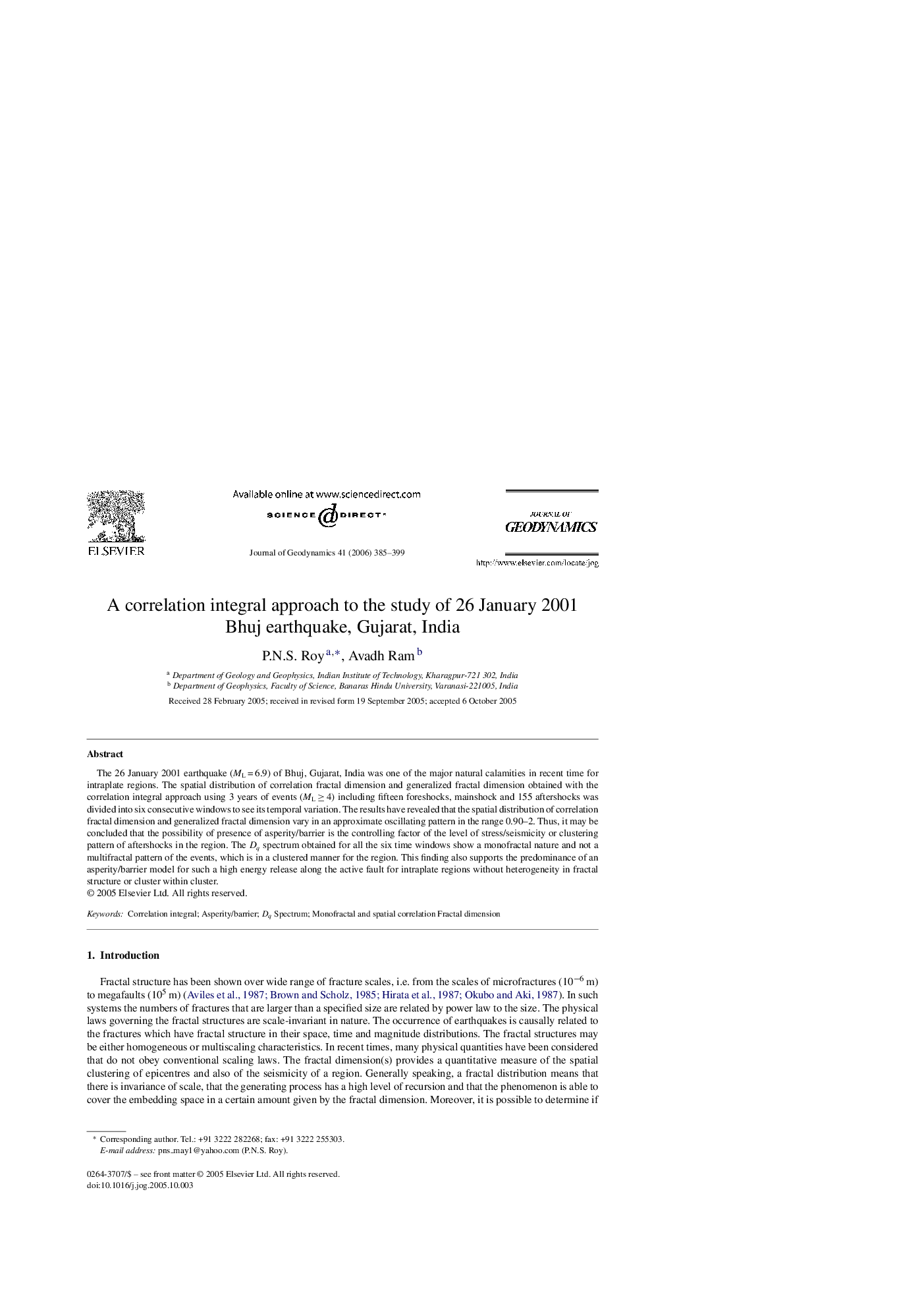| Article ID | Journal | Published Year | Pages | File Type |
|---|---|---|---|---|
| 4688695 | Journal of Geodynamics | 2006 | 15 Pages |
Abstract
The 26 January 2001 earthquake (ML = 6.9) of Bhuj, Gujarat, India was one of the major natural calamities in recent time for intraplate regions. The spatial distribution of correlation fractal dimension and generalized fractal dimension obtained with the correlation integral approach using 3 years of events (ML â¥Â 4) including fifteen foreshocks, mainshock and 155 aftershocks was divided into six consecutive windows to see its temporal variation. The results have revealed that the spatial distribution of correlation fractal dimension and generalized fractal dimension vary in an approximate oscillating pattern in the range 0.90-2. Thus, it may be concluded that the possibility of presence of asperity/barrier is the controlling factor of the level of stress/seismicity or clustering pattern of aftershocks in the region. The Dq spectrum obtained for all the six time windows show a monofractal nature and not a multifractal pattern of the events, which is in a clustered manner for the region. This finding also supports the predominance of an asperity/barrier model for such a high energy release along the active fault for intraplate regions without heterogeneity in fractal structure or cluster within cluster.
Keywords
Related Topics
Physical Sciences and Engineering
Earth and Planetary Sciences
Earth-Surface Processes
Authors
P.N.S. Roy, Avadh Ram,
